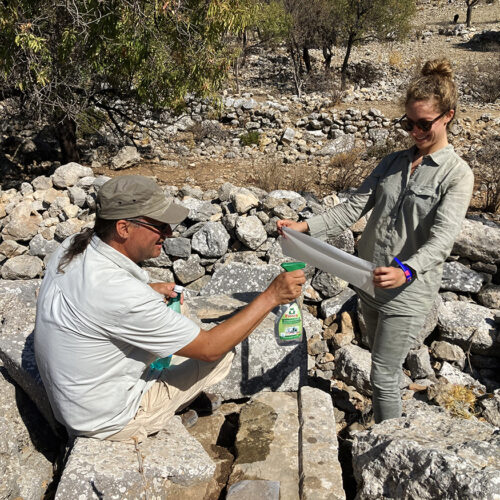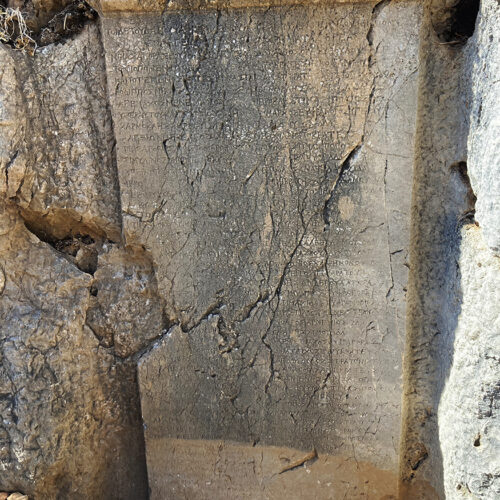Epigraphy: Ancient Greek Inscriptions
Project Team

Dr. Anna M. Sitz
Archaeologist, Universität Tübingen

Assoc. Prof. Dr. Koray KONUK
Assistant Director, Archaeologist - Numismatist, CNRS - Bordeaux Montaigne University, Ausonius Institute
Ancient Greek inscriptions carved on marble or other stones allow us to hear directly from the ancient people of the Carian Chersonnesos, in their own words. These texts may present political decisions, records of donations, honors given to favored citizens or foreign friends, celebrations of victory in athletic competitions, or grave texts. These inscriptions were important for defining the community at Phoenix, linking it with the wider Greek world, and maintaining good relations with gods, neighbors, and family members.
Currently, thirty-two inscriptions from Phoenix have been published. The majority are short grave texts, while others are political or religious in nature. The dates of these texts range from the fourth century BC to the fifth century AD, when Christianity became popular in the late Roman empire. Some are carved on statue bases or wall blocks, while others are carved directly into the bedrock, becoming permanent features of the landscape. These texts offer us important information about the lives of people at the time they were carved, their connections with the wider Rhodian Peraia, and their political, social, and sacred priorities.
Inscriptions, however, were important not only at the time of their original creation but for centuries afterward – even up to the present day. Many ancient, Hellenistic inscriptions were built into an early Christian church at Phoenix, while numerous others were built into modern houses at Taşlıca. These ‘afterlives’ of inscriptions have rarely been the focus of epigraphic research (that is, research on inscriptions). PAP therefore presents an exciting opportunity to study these stones holistically rather than as isolated historical records, investigating the local inscriptions as active features of the landscape and settlement across the centuries. The goals of the PAP epigraphy project are therefore:
- Re-locate and document already-published inscriptions, noting their current preservation in relation to earlier publications.
- Document, read, and publish any newly-discovered inscriptions that may be revealed by the project. In particular, this work is expected to provide critical new data on religious institutions for the PAP Cult research. Special attention will also be paid to findspots, visibility, re-use as building blocks in later structures, and physical characteristics.
- Write a ‘social history’ of the inscriptions of Phoenix, which investigates their role in the community both in the ancient period as well as in the Byzantine, Seljuk, Ottoman, and present-day periods. The project will therefore intersect with the Oral History and Cultural Heritage research at Phoenix to better understand how these inscribed stones are thought of by local populations today. Translations from ancient Greek to Turkish and English will make these texts more accessible to a wider audience.











